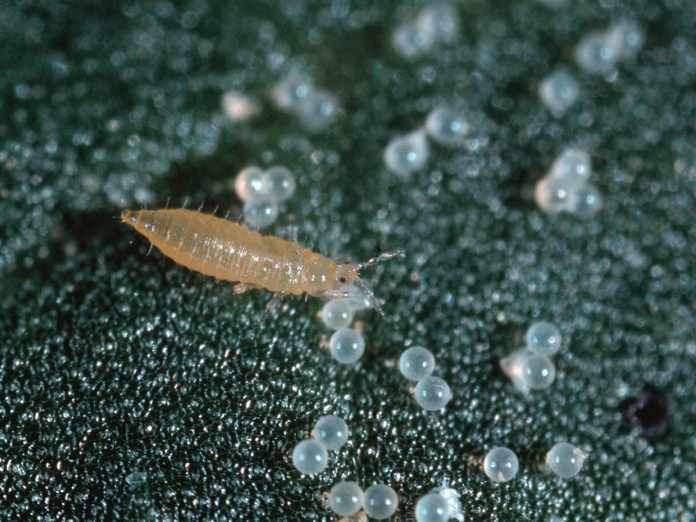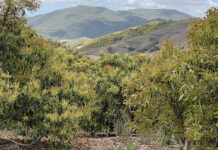
An integrated approach is essential for successful management of western flower thrips (WFT), a serious insect pest in California lettuce.
Surendra Dara, UCCE entomology and biologicals advisor in San Luis Obispo County, said regular monitoring and use of multiple control options, including cultural and biological solutions, are involved in this process.
Multiple options are important, Dara said, because pesticide resistance can easily develop in WFT populations. Keeping WFT populations in the field under control while maintaining efficacy of existing pesticides requires understanding of WFT biology and feeding.
Adult female WFT insert their eggs into plant tissue. The first two instar stages feed on plant tissue and the second stages are non-feeding and reside in soil and emerge as adults.
WFT prefers to feed on flowers, but will also feed on developing buds, fruit and foliage.
While feeding on plant juices, WFT can also transmit Tomato spotted wilt virus. This pest is also the sole vector of Impatiens necrotic spot virus in lettuce.
Only the larval stages of WFT acquire these tospoviruses, and the adults transmit the viruses to other plants as they spread in the field.
Cultural control involves removal of weeds and host plants for WFT or viruses. Destroying previous lettuce crop residues will destroy surviving stages of WFT. Optimum plant nutrition can help lettuce withstand pest damage.
Dara said there are biostimulants or biological soil amendments for lettuce that help activate the plant’s natural defenses.
Biological control involves nurturing populations of predators, including lacewings, minute pirate bugs and predatory mites in the field.
Dara said that the insecticide and anti-feedant Azadirachtin alone or in combination with entomopathogenic fungi or insecticides could be used against multiple life stages of WFT for control. Pyrethrins can also be used alone or with other biological or synthetic insecticides. Botanical insecticides that contain soybean oil, rosemary oil, thymol and neem oil also provide control against WFT.
Insecticidal soaps or mineral oils can be used against different life stages of thrips. Dara said that Spinosad, and a mixture of spinosyn A and spinosyn D, is very effective for control. He noted that overuse of Spinosad could lead to resistance in thrips and other pest insects.
Dara lists several synthetic insecticides that are effective against thrips, noting it is important to rotate chemicals among different mode of action groups to reduce the risk of insecticide resistance. The active ingredients and modes of actions for thrips control are methomyl (1A), bifenthrin (3A), lambda-cyhalothrin (3A), zeta-cypermethrin (3A), clothianidin (4A), spinetoram (5) and cyantraniliprole (28).






















